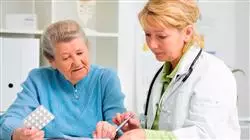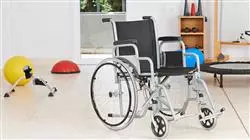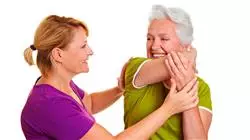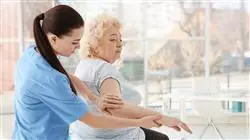
Certificate
The world's largest faculty of physiotherapy”
Description
The specific care that the geriatric patient with frailty needs, comprehensively presented in a program that will give you all the keys to safe intervention in this field"

In order to intervene safely with frail patients, the professional must assess and examine the patient's resistance and physiological reserves in order to establish the appropriate framework for action and choose between home care, residential care, day care or social centers or private clinics.
It is therefore essential to know the tools of physiotherapy and the appropriateness of their application in each case, such as active exercise, manual therapy and electrotherapy. Being able to work in an interdisciplinary team, with appropriate communication tools, understanding the concept of person-centered care, having the most up-to-date knowledge of support devices and even the support of current technology, can be key to success in the treatment of physiotherapy.
The most interesting and efficient advances and innovations in physiotherapy, in a program created to boost your professional skills"
This postgraduate certificate in Fragility for Physical Therapy offers you the characteristics of a high-level scientific, educational and technological program. These are some of its most notable features:
- The latest technology in online teaching software
- A highly visual teaching system, supported by graphic and schematic contents that are easy to assimilate and understand
- Practical cases presented by practising experts
- State-of-the-art interactive video systems
- Teaching supported by telepractice
- Continuous updating and recycling systems
- Autonomous learning: full compatibility with other occupations
- Practical exercises for self-evaluation and learning verification
- Support groups and educational synergies: questions to the expert, debate and knowledge forums
- Communication with the teacher and individual reflection work
- Content that is accessible from any fixed or portable device with an Internet connection
- Supplementary documentation databases are permanently available, even after the program
With the study systems of this program, you will learn quickly and easily, integrating what you have learned in a complete way"
The program’s teaching staff includes professionals from the sector who contribute their work experience to this program, as well as renowned specialists from leading societies and prestigious universities.
The multimedia content, developed with the latest educational technology, will provide the professional with situated and contextual learning, i.e., a simulated environment that will provide immersive learning programmed to train in real situations.
This program is designed around Problem-Based Learning, whereby the professional must try to solve the different professional practice situations that arise during the academic year. For this purpose, the student will be assisted by an innovative interactive video system created by renowned and experienced experts.
A comfortable and simple methodological approach that will allow you to adapt your effort and dedication with total freedom, without losing efficiency in learning"

With the support of high-quality audiovisual systems, the purpose of this program is that you not only acquire the knowledge, but that, upon completion, you possess the working skills you need to excel in this field"
Objectives
This program will mark a before and after in your professional growth. The objective is to provide students with specialized knowledge by creating a well-structured basis to identify the clinical signs associated with the different needs and developments, providing a broad and contextual view of the activity in this field today.

A high-quality program that will allow you to include the specific knowledge involved in the care of frail patients in your daily practice"
General Objective
- Develop a critical and reasoned attitude, based on the most recent scientific evidence, towards physiotherapeutic diagnosis in the elderly patient and to be able to apply an adequate treatment in order to reduce functional impotence, fragility and deterioration, thus favoring an improvement of physical and mental health in old age
Specific Objectives
- Define the tools for comprehensive geriatric assessment of frailty
- Apply the different frailty assessment scales
- Explain the assessment of frailty in physical therapy
- Explain the prescription of physical activity in the frail person
- Develop strategies to implement group dynamics in the frail or pre-frail patient
- Define the risk factors for falls
- Explain specific fall risk diagnostic tests
- Describe restraint methods to prevent falls

A unique specialization program that will allow you to acquire advanced training in this field”
Postgraduate Certificate in Fragility for Physical Therapy
Population aging has been a reality in recent decades, and this has led to an increased prevalence of chronic diseases, frailty and disability in the elderly. Therefore, physical therapists need to be increasingly prepared to address these new challenges and provide quality care that improves patients' quality of life. In response to this urgent need, TECH has created the Postgraduate Certificate in Frailty for Physical Therapy, where you will address topics such as the assessment and management of frailty, the importance of physical activity in the prevention or treatment of frailty, and person-centered care in physical therapy.
The latest scientific postulates in a 100% online program.
Do you want to update your knowledge in the care and management of frailty? The Postgraduate Certificate in Frailty for Physical Therapy is designed for you to acquire the most specialized knowledge in this area, in a didactic way, through real clinical cases and interactive activities. In addition, being a 100% online program, you can combine it with your work and personal activities, all from anywhere, anytime.






